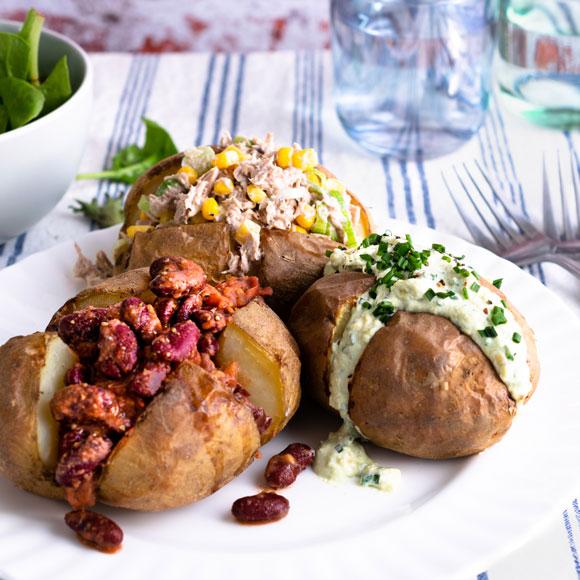Glossary of cooking words
Recipes use lots of cooking words – we explain what frequently used cooking terms mean for junior chefs.

On this page
Recipes use lots of cooking words – here’s what they all mean.
al dente
Pronounced “al den-tay”, you might have heard this word used when someone cooks pasta or rice. It is translated from Italian as ‘to the tooth’ meaning something cooked but left with a bite of firmness.
bake
To cook something in the oven.
baste
When baking food in the oven, liquid comes out. To baste is to pour the liquid at the bottom over the top of the food to keep it moist.
beat
To thoroughly combine ingredients together using a whisk, food processor, spoon or fork. When you beat eggs, you make sure the egg yolk is mixed into the egg white.
blend
To mix different ingredients together, sometimes using an electric blender or whisk.
boil
To heat a liquid in a saucepan until it bubbles and you can see some steam.
broil
This is a word usually used in America, but it basically means grill.
cook through
To cook through means to make sure the food is not raw in the middle. Sometimes you may be asked to heat through, which means just making sure it’s hot in the middle.
core
To core means to remove the core (or middle) of a fruit or vegetable, such as coring an apple.
deseed
To remove the seeds from a food.
dice
This means to chop the food into small square chunks. If you are asked to dice roughly, the chunks don’t need to be too small or exact, but if you’re asked to dice finely, you should try and make the chunks small.
drain
(Similar to strain) To remove water from food using a sieve or colander, such as tinned beans, or when you cook pasta in water.
fold
This is often used in baking and means to combine ingredients in a bowl gently, by moving a spatula over and under the ingredients.
grate
To rub a food (like a carrot or cheese) against a grater to make thin shavings.
grill
Grilling food is cooking it with heat from above. Sometimes you can see grill lines (black lines) on food that’s been cooked under the grill.
grease
This means to apply fat (oil or butter) to a tin or roasting tray to prevent food from sticking to it. You often grease a cake tin before baking.
grind
You might grind whole spices or pepper corns to break them down into small pieces.
knead
Kneading means working dough with your hands by pressing, folding and stretching it. You do this to make pasta and bread.
line a tray
Sometimes we line a baking tray with baking paper or foil to prevent our food from sticking to the tray. ‘Lining it’ means putting a sheet down roughly the same size of the tray.
marinate
This means putting your food in some kind of spice or flavouring for a period of time so that your food soaks up all the flavour. You often marinate meat or fish – but you can marinate cheese and vegetables too.
over a high/medium/low heat
This is often said in recipes and it’s talking about the level of heat from your hob. You’ll put a saucepan or frying pan on the hob oven a high, medium or low heat.
parboil
To boil food only slightly, so that it’s not fully cooked. For example, you’ll often do this to make roast potatoes – parboiling them before roasting them in the oven.
peel
To take the skin off a vegetable or fruit.
poach
To cook food gently in liquid, for example poaching eggs.
Ready to cook?
reduce
This is when you’re boiling or simmering a liquid and the liquid reduces by evaporating. Often, it means the liquid gets thicker so it’s done when making sauces or stews.
roast
“Roast” is also used as another word to bake in the oven – confusing!
sauté
Pronounced “soh-tay”, this is a French word meaning ‘to jump’. It means cooking food in a small amount of oil over a high heat.
season
To add flavour. You might season with black pepper, spices or lemon juice.
sieve
To remove the lumps from a food such as flour by pushing it through the small holes of a sieve.
simmer
To keep liquid bubbling gently but not boiling.
stir fry
To quickly cook food in a frying pan over high heat, stirring constantly.
steam
Method of cooking food by using steam. This is a healthier method of cooking because it uses no oil.
strain
To put food into a colander or sieve to drain off the liquid – like the water you have been cooking pasta in.
Ready to cook?
sweat
Can you believe that vegetables sweat? When you sweat vegetables, this means cooking vegetables in oil often with a lid so that the liquid from the vegetables are released. Recipes often say to sweat onions.
whip
Often used in baking, whipping is beating food with a whisk so that air gets into the food and it gets bigger.
whisk
Using a whisk or fork to blend food and mix it together.
zest
Means removing the outer skin of citrus fruits (lemons, limes and oranges) using a zester, grater or knife. The zest has really good flavour.





